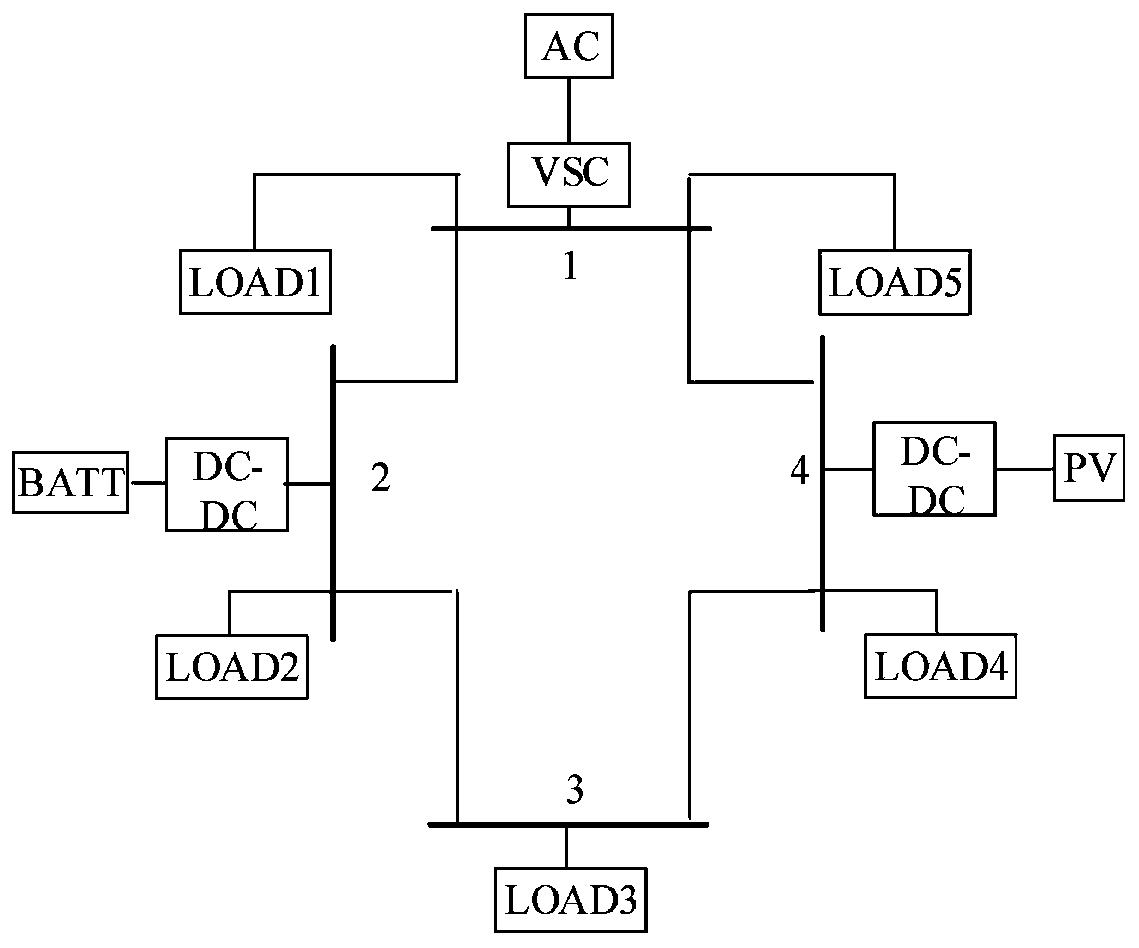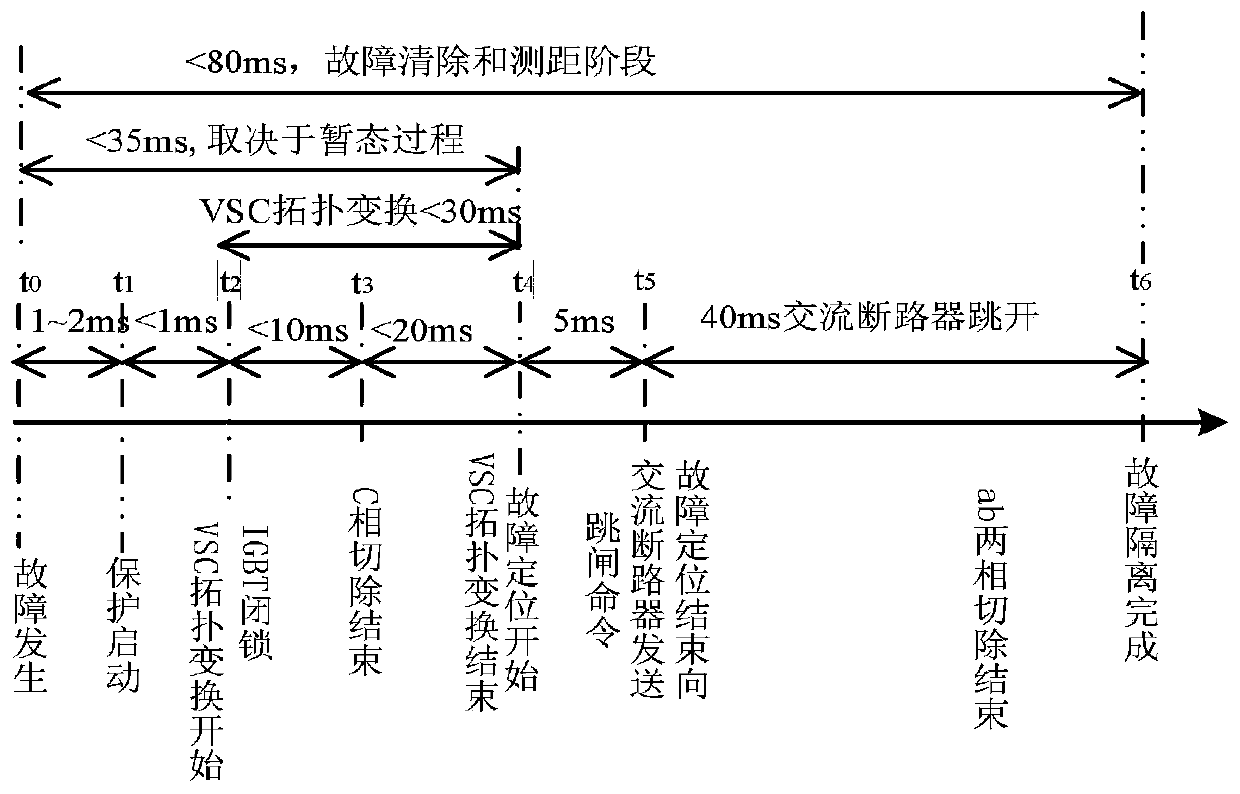Direct-current microgrid fault isolation method based on alternating-current circuit breaker removal
An AC circuit breaker and fault isolation technology, which is applied to emergency protection circuit devices and electrical components, can solve problems such as reduced reliability, potential safety hazards, and existence of relay protection, so as to improve reliability, reduce construction and operation costs, and improve Economical effect
- Summary
- Abstract
- Description
- Claims
- Application Information
AI Technical Summary
Problems solved by technology
Method used
Image
Examples
Embodiment Construction
[0024] The present invention will be described in further detail below in conjunction with accompanying drawing and example.
[0025] figure 1 Shown is a typical multi-terminal low-voltage DC micro-grid system. Compared with single-pole ground faults, the occurrence rate of inter-pole short-circuit faults is lower but the damage is the most serious. Therefore, the present invention only considers inter-pole short-circuits.
[0026] figure 2 This is the topology diagram of the VSC after a fault.
[0027] image 3 Sequence diagram of the action strategy for the fault isolation scheme. Figure 4 , 5 They are the simulation diagrams of DC side line fault current change in the case of metallic fault and 5 ohm transition resistance respectively (fault time is 0.5s). In order to compare and highlight the reliability of the AC circuit breaker action of this scheme, Figure 6 It is a simulation diagram of DC side fault current when there is a metallic fault (0.01 ohm) based on t...
PUM
 Login to View More
Login to View More Abstract
Description
Claims
Application Information
 Login to View More
Login to View More - R&D
- Intellectual Property
- Life Sciences
- Materials
- Tech Scout
- Unparalleled Data Quality
- Higher Quality Content
- 60% Fewer Hallucinations
Browse by: Latest US Patents, China's latest patents, Technical Efficacy Thesaurus, Application Domain, Technology Topic, Popular Technical Reports.
© 2025 PatSnap. All rights reserved.Legal|Privacy policy|Modern Slavery Act Transparency Statement|Sitemap|About US| Contact US: help@patsnap.com



